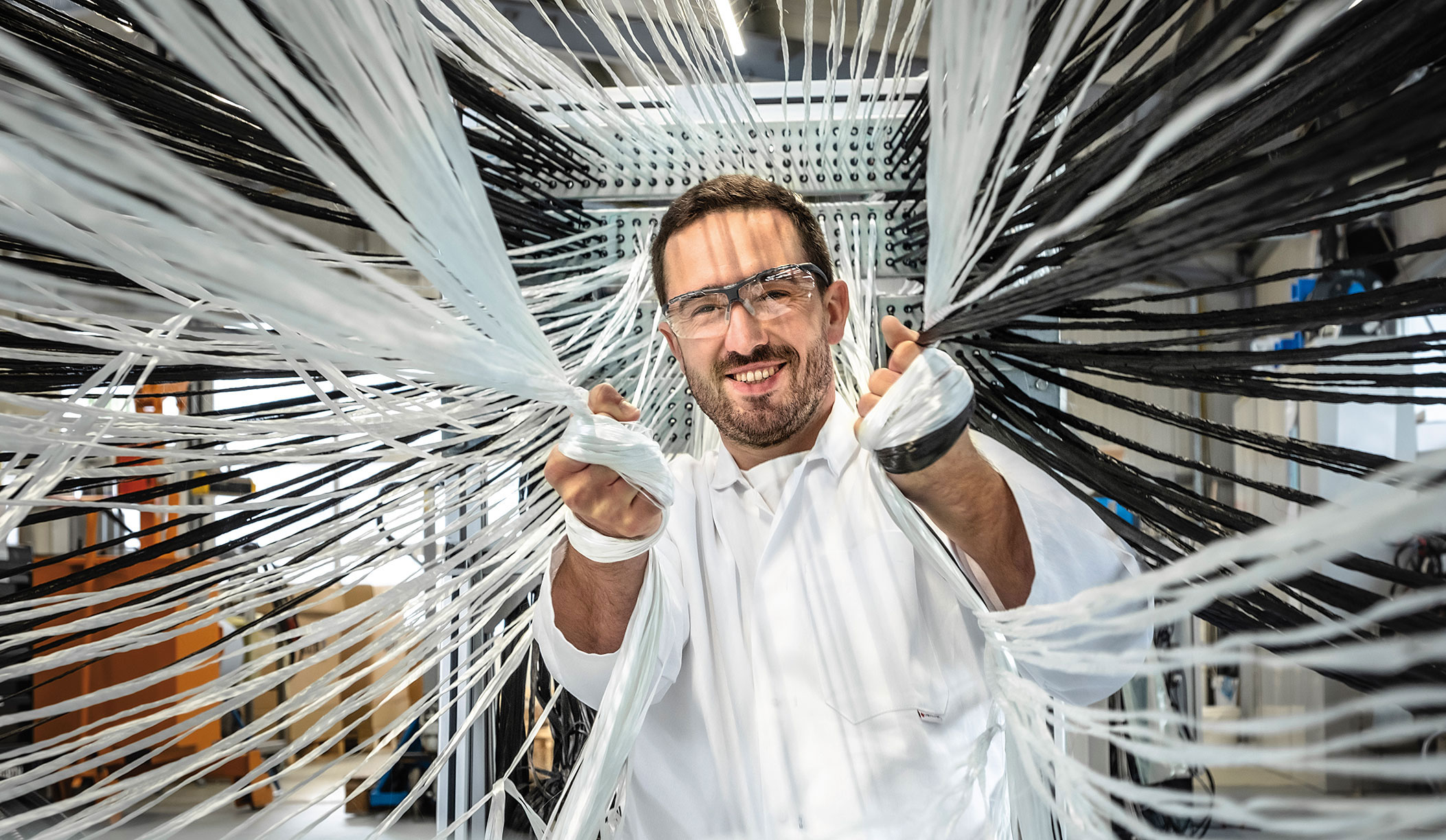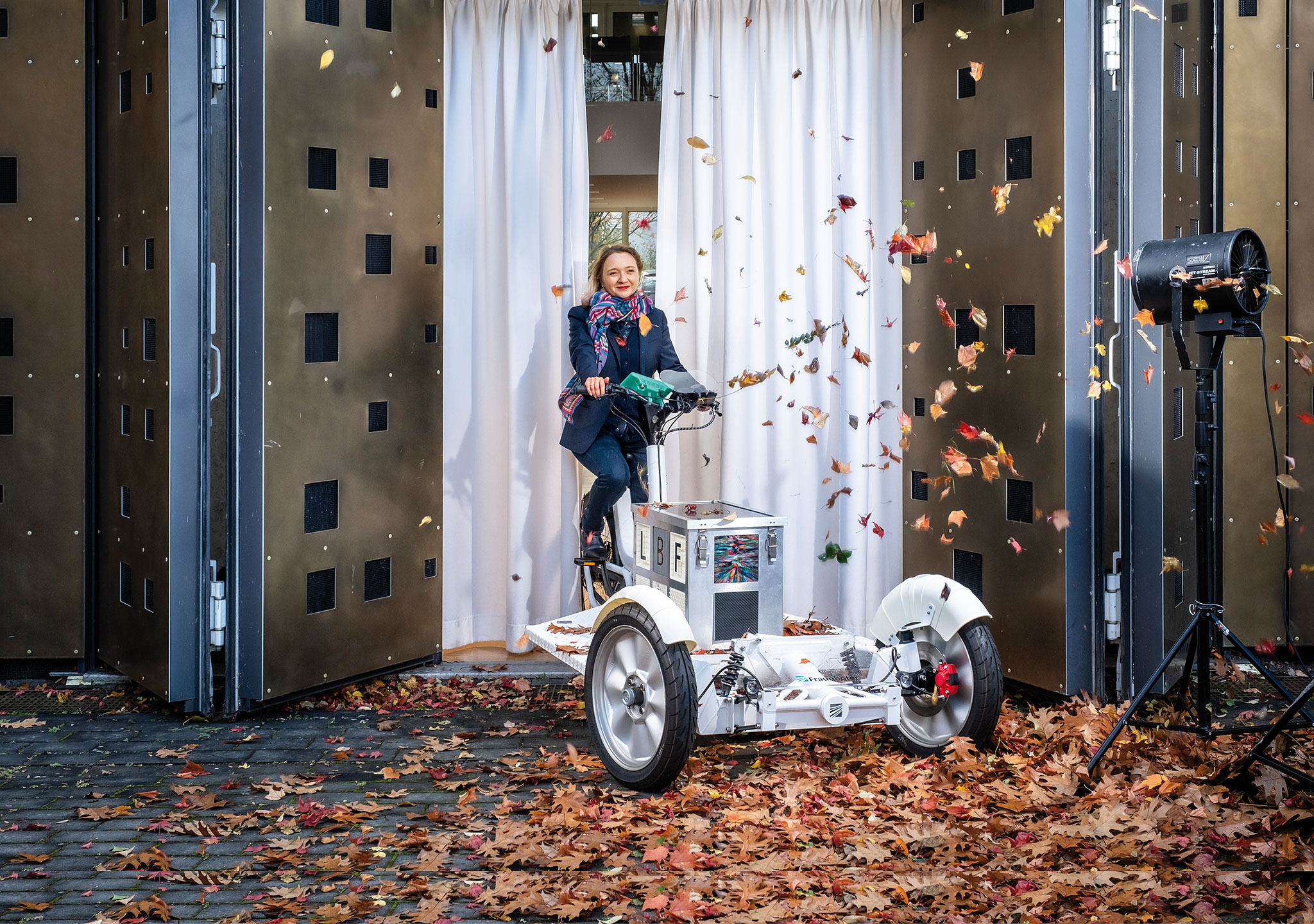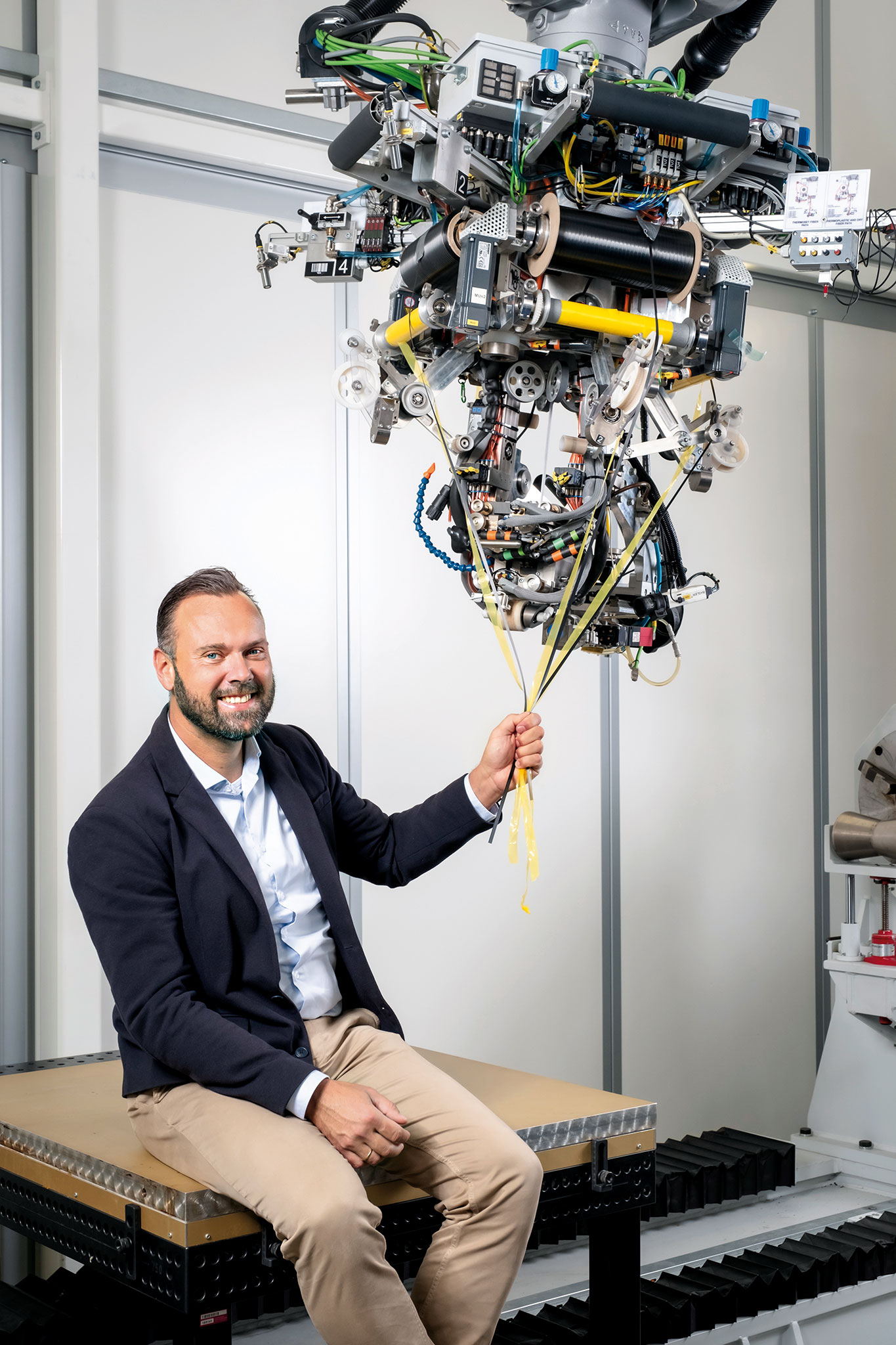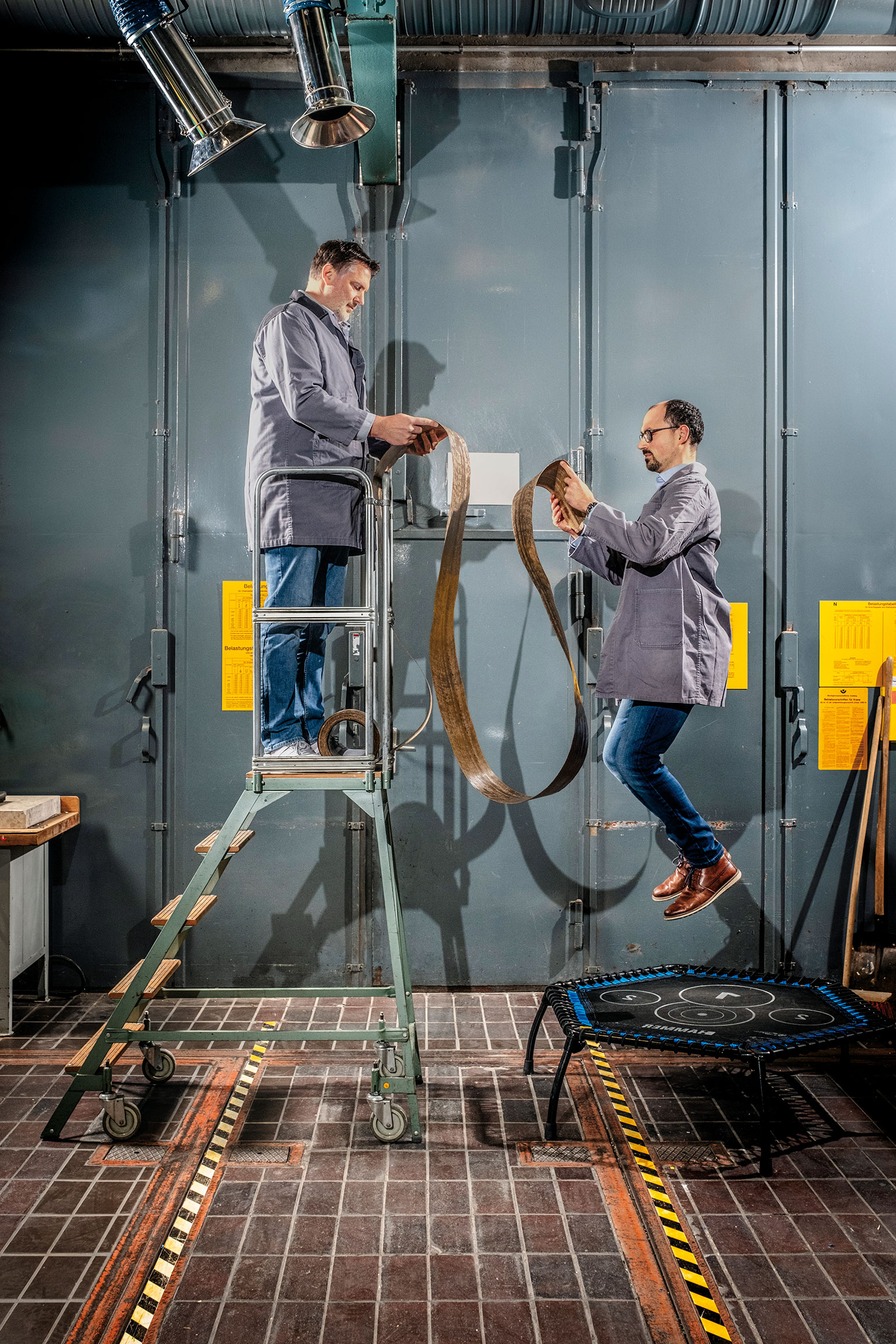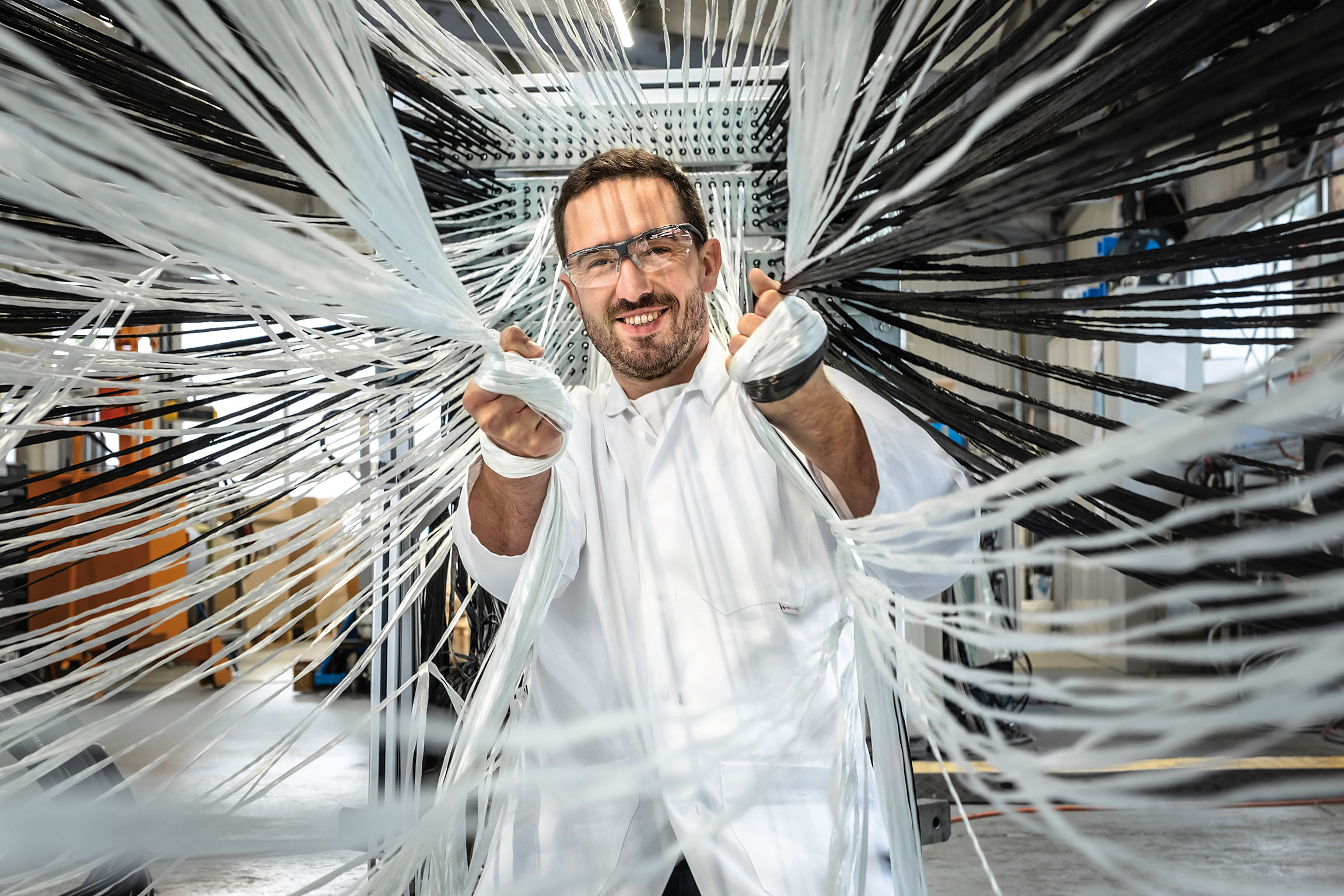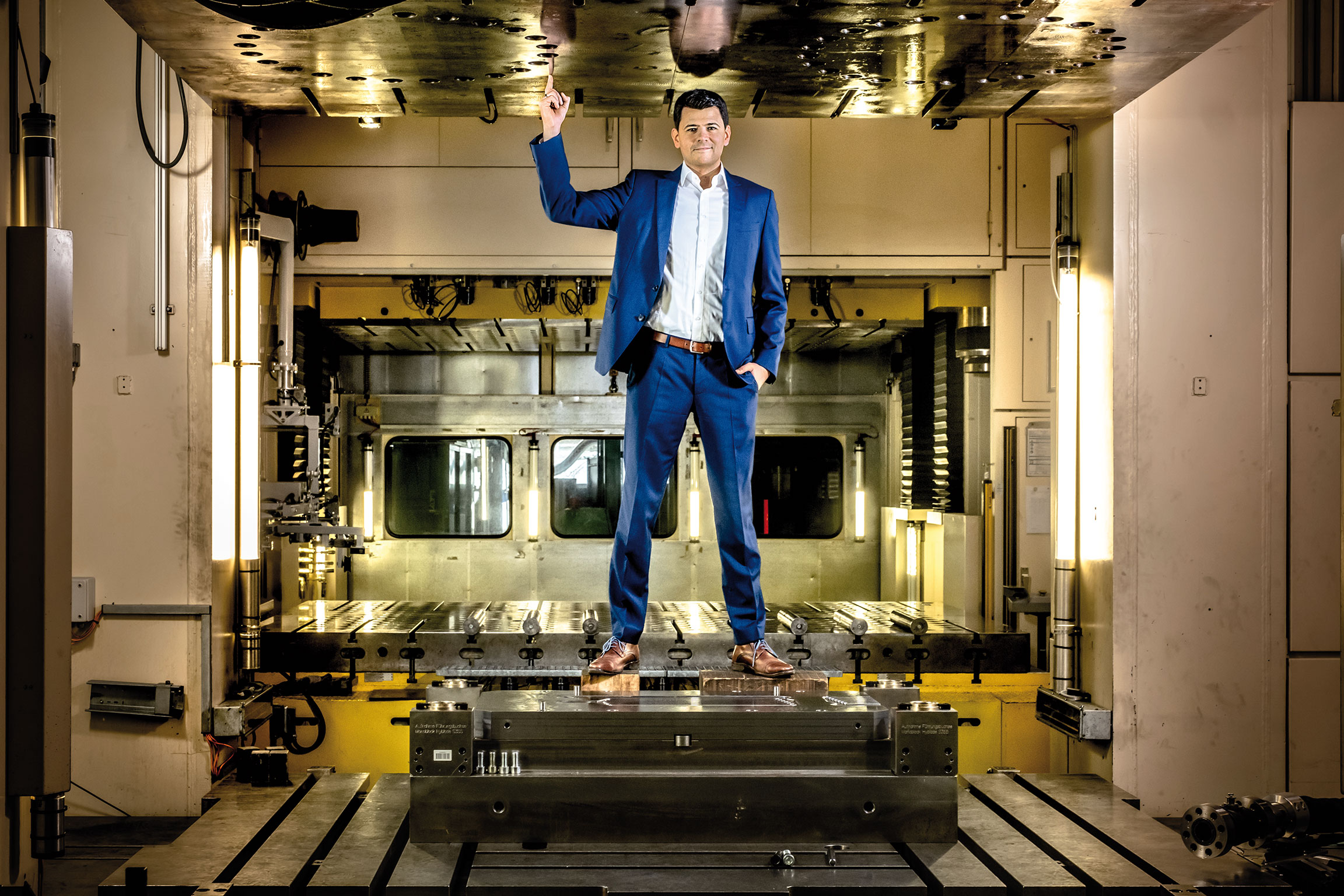Lightweight technology
Lighting the way: The German Federal Ministry for Economic Affairs and Climate Action (BMWK) has highlighted lightweight construction methods as a key technology for the future. In July 2021, the German federal government agreed on a lightweight construction strategy. Lightweight construction is not just about making slight reductions in mass. This construction philosophy focuses on selecting materials, designing products and carrying out production processes in a way that conserves materials and makes products lighter, while also improving functionality and safety at the same time.
Heavy objects are a burden on the environment. If a car is made 100 kilograms lighter, its fuel consumption decreases by around half a liter per 100 kilometers. That doesn’t sound like much, but considering cars in Germany travel 582.4 billion kilometers per year, it quickly adds up to an enormous amount. Reducing the weight of an Airbus 320 by 100 kilograms saves almost 10,000 liters of kerosene per year. The fact is, the consumption of raw materials globally has more than tripled since 1970 and around half of global greenhouse gas emissions now stem from raw material extraction and processing. Smart lightweight construction uses less material − which helps reduce the German industrial sector’s dependence on raw material imports and lessens the financial strain on companies, as 43.2 percent of costs in the manufacturing sector come from material procurement.
“Lightweight construction technology helps to reduce many different industries’ environmental footprints and to support the transition to a more sustainable industrial sector,” says Prof. Alexander Böker. The director of the Fraunhofer Institute for Applied Polymer Research IAP believes that, when combined with digitalization and bionics, lightweight construction can open up new opportunities in emerging future markets, thus serving as a driver for increasing resource and energy efficiency.
However, for these industries, the transition to lightweight construction is not a step to be taken lightly; the transformation requires a whole new way of thinking. According to Prof. Böker, research has a vital role to play here: “In order to ensure that industry, particularly the SME sector, can harness the huge opportunities for transformation offered by lightweight construction, we need to accelerate the process of transferring scientific knowledge to practical application.”
